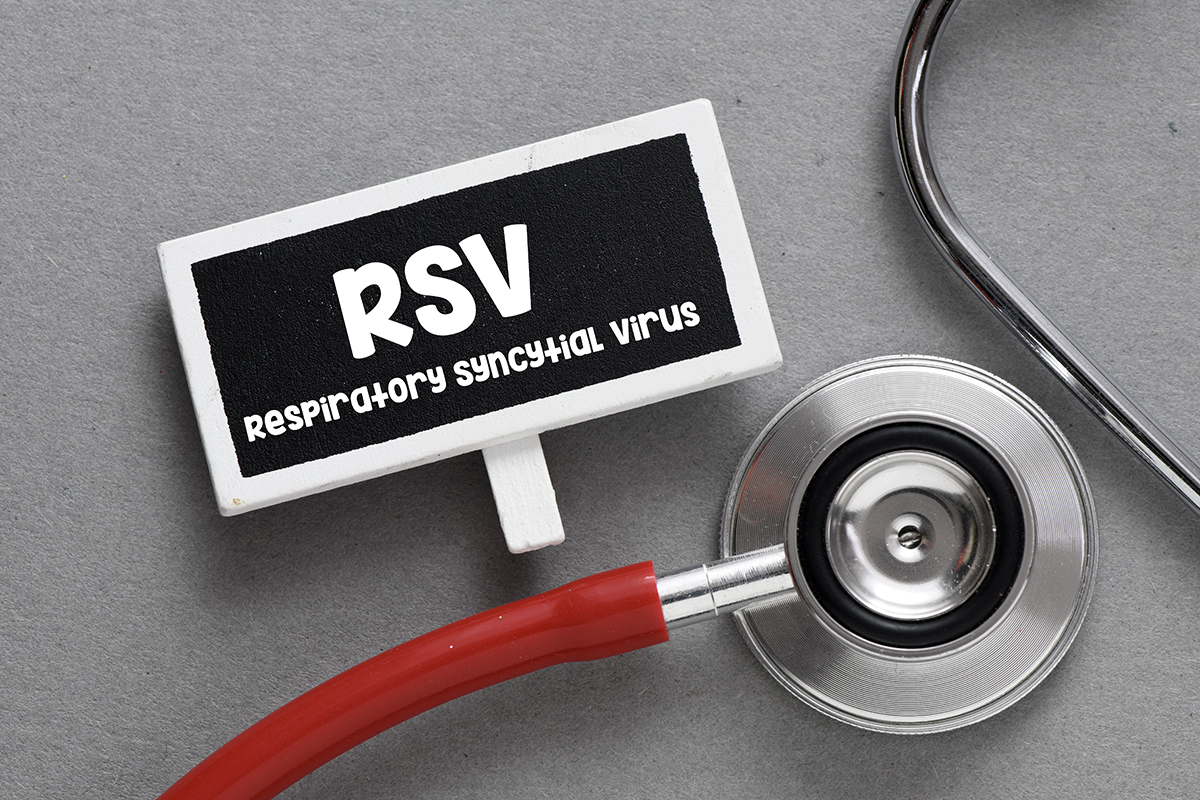What is RSV and how is it spread?
Respiratory syncytial virus (RSV) is a virus that causes respiratory infections that are particularly dangerous for young children and the elderly. RSV is the main cause of bronchiolitis and pneumonia in infants under one year of age. The virus is also responsible for serious infections in older people, especially those with weakened immune systems or chronic respiratory diseases.
RSV is spread mainly by the droplet route when an infected person coughs or sneezes, releasing tiny droplets containing the virus into the air. The virus can also be transmitted through direct contact with infected secretions, for example when we touch infected surfaces and then our faces. RSV is highly infectious and can survive on the surfaces of doorknobs, toys or countertops for several hours. During the autumn and winter season, when respiratory viruses are more active, the risk of RSV infection is particularly high.
One of the challenges in the fight against RSV is its ability to spread rapidly in areas with large numbers of people, such as nurseries, schools and care homes. This virus can cause epidemics that quickly involve numerous groups. Therefore, understanding how RSV spreads and what steps can be taken to prevent infection is important to protect public health, especially during the season of increased viral activity.
Symptoms of RSV in children and adults
Symptoms of RSV infection can vary depending on the age of the patient and the state of their immune system. In most healthy adults and older children, RSV usually causes cold-like symptoms: runny and congested nose, cough, sore throat, fever, headache, general fatigue and malaise.
However, in young children, especially infants, RSV can lead to much more serious symptoms. The youngest children are particularly susceptible to developing bronchiolitis and the pneumonia it can cause:
- rapid and difficult breathing;
- wheezing (whistling while breathing);
- dilated nostrils and involvement of the abdominal muscles in breathing;
- A bluish colour to the skin, especially around the mouth and nails, resulting from oxygen deficiency;
- loss of appetite and feeding problems, especially in infants
In adults and the elderly, usually those with chronic lung or heart disease, RSV can also lead to complications in the form of exacerbation of existing conditions, pneumonia or respiratory failure. Symptoms can be similar to those seen in young children, but are often less intense.
Understanding the symptoms of RSV allows rapid diagnosis and treatment of the infection. For young children and the elderly, early detection and appropriate medical care can prevent serious complications and improve prognosis. If you notice symptoms of RSV in your child or elderly person, especially breathing problems, contact your doctor immediately.
Diagnosis and treatment of RSV infection
Doctors usually begin the diagnosis with a thorough medical history and physical examination, including auscultation and palpation. Symptoms such as cough, fever, runny nose and difficulty breathing may suggest RSV, but these are similar to other viral infections, making a definite diagnosis difficult.
To confirm the presence of RSV, doctors can perform diagnostic tests. The most common are tests for the presence of the virus in nasal or throat secretions, which can be done quickly in a doctor's office or laboratory. For more serious cases, especially when the patient requires hospitalisation, doctors may order more advanced tests such as RT-PCR, which are much more sensitive and accurate.
Treatment of RSV depends on the severity of symptoms. In most cases, RSV infections in healthy children and adults are mild and can be treated at home. The basic measures are rest, hydration, humidification and the use of over-the-counter antipyretics and painkillers. However, in high-risk individuals, RSV can lead to serious complications requiring hospitalisation.
In hospital, treatment may include oxygen therapy to ensure adequate oxygen levels in the blood, and intravenous fluids if the patient has hydration problems. In some cases, mechanical ventilation may be required to support breathing. Antibiotics are not effective against viruses, but can be used for secondary bacterial infections. There are also antiviral drugs, such as ribavirin, which can help in severe cases, but their effectiveness and use is limited.
Preventive measures
Protection against RSV, especially during the autumn and winter season when the virus is most active, is mainly based on maintaining good hygiene and limiting contact with potentially infected people. Regular hand washing with soap and water for at least 20 seconds is one of the most effective ways to prevent the spread of the virus. It is important to wash hands after contact with sick people, when returning home, before eating and after coughing or sneezing. In situations where access to water and soap is limited, alcohol-based disinfectants are effective. It is advisable to avoid touching the face, especially the nose, mouth and eyes, to prevent transmission of the virus to mucous membranes.
It is advisable to avoid crowded places and close contact with people who show symptoms of respiratory infection, such as cough, runny nose or fever. Regular cleaning and disinfection of frequently touched surfaces, including electronic devices, is equally important due to the fact that the virus can survive on them for several hours. The next step is to strengthen the immune system through a healthy diet, regular physical activity, adequate sleep and avoiding smoking. For infants, breastfeeding is recommended, as breast milk contains antibodies that provide protection against infection.

